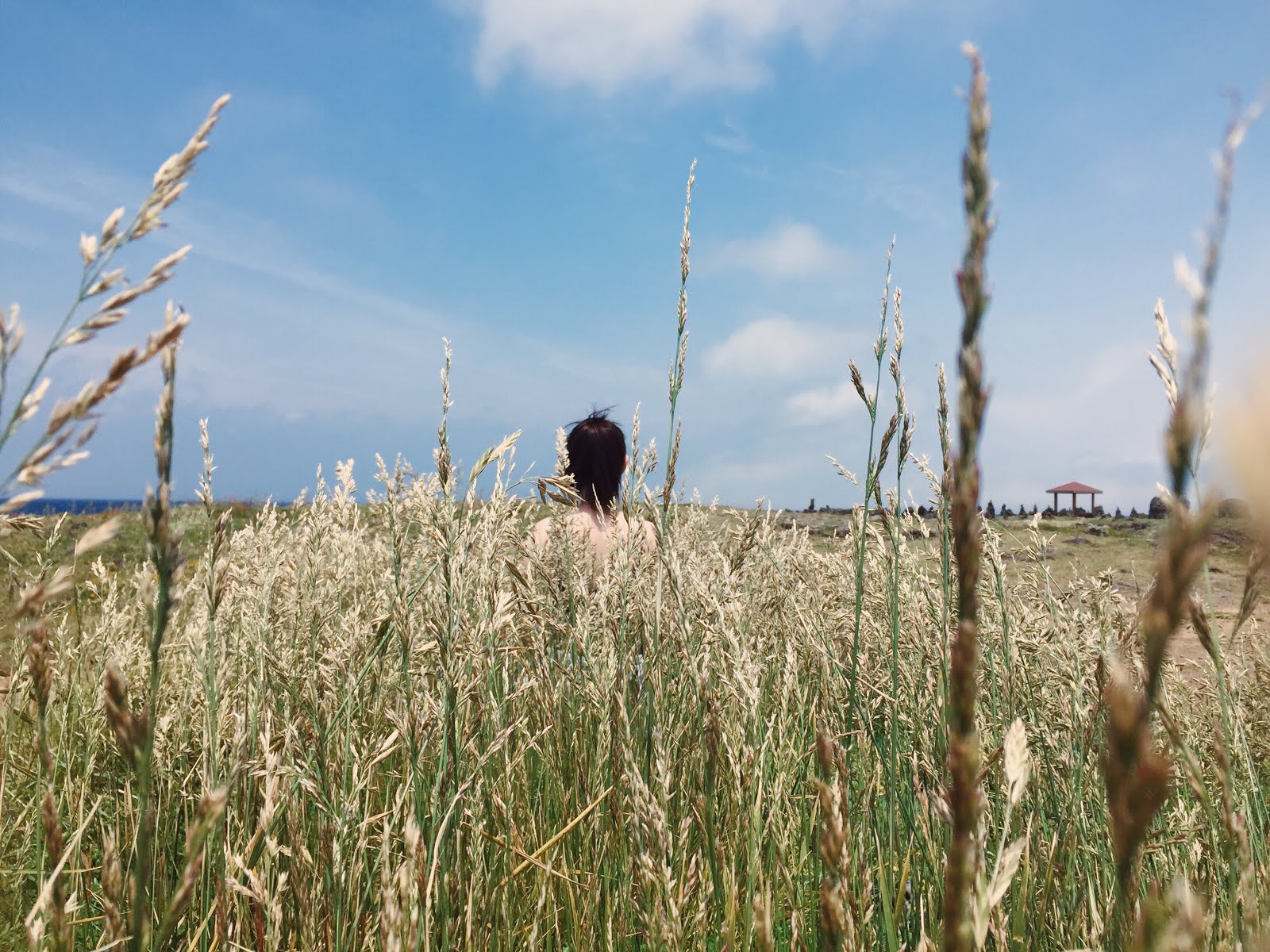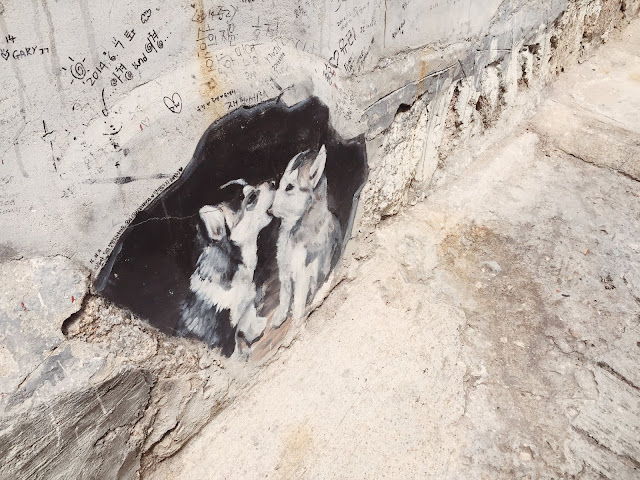Seoul will always be one of my favorite cities. The place offers more than just mainstream pop music, flashy music videos, dynamic food offerings, fashion-forward designs, modern technology, and architecture. Seoul is indeed a place filled with character, stories, and soul.
If you are traveling on a budget, one of the best ways to enjoy Seoul would be exploring its neighborhoods. Trust me when I say that you will never run out of things to see and appreciate in this city. Depending on your budget, preference, and style of traveling, there will always be something to do and see - there will always be public parks, creative neighborhoods, interesting cafes, and amazing art galleries or museums that offer so much learning and views for free. If it is your first time to visit Seoul, one of the places that I definitely recommend for you to visit is Ihwa Mural Village. Located near the Naksan Park and the Dongdaemun Gate, the uphill and downhill roads of Ihwa would take you on a scenic and somehow cinematic route.

(Disclaimer: This post contains affiliate links, any sales made through the link will reward me of a certain percentage at no extra cost for you. This allows me to maintain the site. Thank you for your support!)
-
Allow me to give you a little bit of history about the place. Ihwa-dong is considered to be one of the oldest neighborhoods in the city of Seoul. Considered as one of the many daldongnae or "moon villages" in the city, the term was taken from the idea of hilltop locations, which is considered to have the best view of the moon, the stars as well as the city that sits below it.
Contrary to the root of its nickname, Ihwa-dong was considered as a neighborhood for those who could not afford apartments or housing in the flat and central parts of Seoul.
In the 1950's it was also known as an impoverished neighborhood that served as a refuge for those who survived the Korean war. Since then, the neighborhood slowly built up an image and a name for itself as it became known for garment and textile businesses.
In the early 2000s, the residents slowly moved to more industrialized areas leaving this small suburban neighborhood slowly decaying and even faced the threat of demolition. In 2006, the Ministry of Culture, Sports, and Tourism has started a campaign to preserve the neighborhood by turning it into a local attraction that would help improve the living conditions in the area.
Dubbed as the "Art in the City Project", the local government has sought after 70 artists to work on different art installations and murals around the Ihwa neighborhood. Eventually, both local and visiting artists have turned the landscape, buildings, and objects as an important element of the artworks produced.
Sitting at the foot of the Naksan Park, the neighborhood is also adjacent to the Changgyeong Palace. Since we were coming from the palace already, our Korean friends from church, Jubora and Jusanna were kind enough to accompany us to Ihwa. Known as a hillside neighborhood, visitors should expect a bit of a hike. I would strongly recommend that you wear your most comfortable shoes and be in your most comfortable clothes at the same time.
One of the most common themes I saw in the murals would be these subtle yet strong reminders. Apparently, after the project finished, it gained a lot of attention from the public and even got featured on a lot of Korean TV shows and dramas like 2 days, 1 night and the Rooftop Prince. Just like any other pursuits, there will always be good points and bad points. Eventually, after the place has garnered international and local exposure, the residents felt a sense of discomfort as they suffered from noise and a problem in waste disposal due to the trash being left by tourists.
I was actually saddened by the fact that this staircase used to have a beautiful mural painted on it. But due to the public disturbance, the residents painted over some of the murals to show their disappointment toward the lack of discipline and courtesy among tourists.
But as I walked along, I found myself entertained by the artworks that remained in the walls of this neighborhood. It definitely is the perfect example of the saying "if these walls could talk". Ihwa Mural Village is a huge outdoor gallery and each corner would speak of a theme, a story, a certain sense of reminder. Aside from the residential areas, you would also get to enjoy a variation of cafes, restaurants, lifestyle and fashion boutiques and even small recording studios!
This place is very young and diverse. If you are looking for a model or idea for a business or even just look for creative inspiration, this place will definitely have something to give you.
Aside from the small boutique cafes and stores, the place also has a wide array of Guest Houses that double as a restaurant. If you are looking for a place to stay in Seoul and you would like to immerse yourself in a more local and serene neighborhood, then I would highly suggest for you to look up properties along the Ihwa-dong area.
I happen to come across these students sketching the urbanscape. I heard that a lot of art students come here to sketch scenes for their plates in school and I find that the most effective way of learning because not only do they get to hone their drawing techniques, they also learn to appreciate every single detail and story behind each scenery, person, or even situations that surround them.
They were not kidding when they said views. This place definitely rewards you with a sweeping scene of the city and the skyline. This is why a lot of cafes offer a balcony view - for one to enjoy looking at the view itself, reading a book quietly, or even drawing the scenes you witness. Again, this is an activity that would exercise your skills on observation, creativity, and not to mention, spending less.
Aside from the variations of murals in the neighborhood, I also got to enjoy the place more by observing the deeper parts of the alleys, where traces of living conditions, people, and culture are visually evident - waiting to be carefully discovered and appreciated by someone. I would have to point out though that when you do this, take into account that these are actually habitable spaces and not everyone would be keen enough to have their alley or homes explored. Have a sense of empathy and sensitivity to understand their cues.
Since we came during Spring, there were a lot of blooms that popped out of plant boxes and sidewalks. It made the walk more pleasant and relaxing! I also realized that landscaping really does a lot when it comes to enhancing any place.
Some personal insights:
It is saddening to know how social media has helped and ruined tourism at the same time. If we continue to travel to places and take photographs of it, we should all know that there is a certain sense of responsibility that come along every Geotag or mention of the place. I know, most of you would probably tell me "But you write about your travels and show these things, aren't you contributing to the hype?" and to that, I would answer this: Travel consciously. Let us travel and write about it with the earnest intention of getting to know what's in front of us and share that information with people. Let us be sensitive about the people that live in these places, let us utilize the time spent in the place to nurture our learnings, satisfy our wonder and yet maintain a sense of respect and decorum.
These murals were created to be visited, experienced, and appreciated, to that I would strongly agree.
But I also hope that when you visit this place or any place of the same concept, you would bear in mind that by contributing to the mess and disarray of things, you would eventually also contribute to the closure of that place. Ihwa Mural Village is still there for us to enjoy and appreciate, it's there for the residents to thrive and showcase their businesses, but most especially Ihwa is a neighborhood filled with homes of people who wish to enjoy their peace and privacy. If we wish to keep seeing these type of neighborhoods, we should exercise discipline and respect towards the people who live in the place.
Some reminders while visiting the village:
-Be mindful of your trash. If you have a water bottle with you or a pack of snacks, remember to keep a plastic bag that you can carry along and dispose properly later on.
-People live in this place, respect the right of way and have proper decorum. DO NOT drag your shoes or stomp loud, avoid running around, scream or talk loudly.
-DO NOT spit. Do I need to say more?
-Be friendly, you will more or less run into locals. Give them a polite smile or bow especially if they are elderly, they will definitely appreciate it.
-Try considering the idea of visiting the place on regular store hours. Personally, I would recommend the afternoon around 3-5pm.
Since it is a pretty big neighborhood, I would personally recommend you to book a walking tour if your budget allows. I strongly recommend this WALKING TOUR by TRAZY! I would say that they offer a good and reasonable price for a walking tour. To be honest, I might consider coming back here and take a walking tour when I go back to Seoul next year. Since we visited the place by ourselves, we were not able to maximize and see everything that has to be seen and this makes it more exciting because again I will go back to what I said earlier that Seoul will always have something to offer and show you!
How to get to Ihwa Mural Village:
Take LINE 4 of the Subway and get off at the HYEWA Station, exit 2. Walk towards Marronier Park and turn left after passing through it. Walk straight to Narksan Park and you will know you are there once you start seeing the murals.
Have you been to Ihwa Mural Village? Let's talk about it!
Happy Heyday!










































Comments
Post a Comment